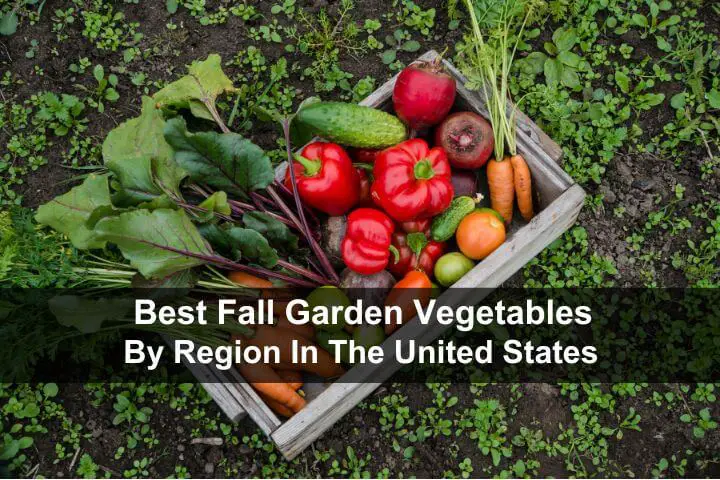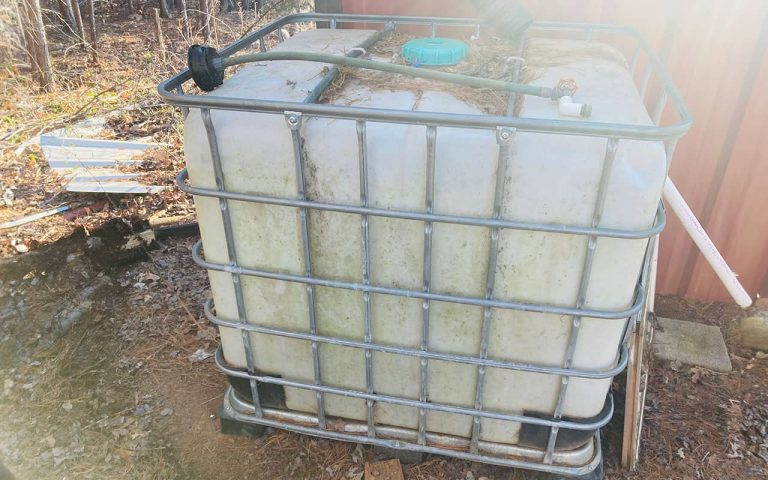Estimated reading time: 20 minutes
Gardening isn’t just for the spring and summer months. If you’ve already harvested the majority of your crops and are left with an empty gardening space, you may be wondering if you should do something with it.
If you don’t take advantage of the fertile soil, the weeds certainly will. The weather is still nice during the day and the nights aren’t too cold yet, so why not plant another round of crops?
There’s still time to plant, even in September. There are plenty of veggies that actually prefer the cooler weather, and because they have relatively short growth cycles, you can get one more crop of fresh vegetables before winter sets in.
Now, for some people in northern regions of the US, winter is knocking on the door and some crops won’t have time to ripen before the first freeze. In other regions, you don’t have to limit yourself to short crops. You have plenty of time to grow yummy fruits and veggies without worrying too much about a freeze.
Want to save this post for later? Click Here to Pin It On Pinterest!
The following list will help you determine what you can plant in September based on where you live in the United States. Use the links below to jump to your region:
• Northwest
• Midwest
• Southwest
• Northeast
• Southeast
Northwest
The cool wet temperatures of fall will limit your choices to plants with short growing cycles and plants that thrive in the cool weather. Covering the plants at night in mid to late October will protect them from any light freezes.
Arugula

Arugula thrives in the cool, damp climate of the Northwest. Sow seeds directly into the garden in late summer, spacing them about 1 inch apart in rows 6 inches apart. Thin the seedlings to about 4-6 inches apart to allow room for growth.
Arugula can benefit from partial shade, which protects the leaves from getting too much direct sunlight. Harvest the leaves when they are young and tender, around 3-4 inches long, by snipping them at the base, which encourages new growth.
Collard Greens

Collard greens are robust vegetables that prefer a sunny location and rich, well-drained soil. Start the seeds indoors 6-8 weeks before the first expected frost. Transplant seedlings when they have 4-6 leaves, spacing them about 18-24 inches apart in rows 3 feet apart.
Collards can withstand light frosts, which can make the leaves sweeter. Harvest the outer leaves first, allowing the inner leaves to continue growing. Leaves are best when they reach about 10 inches long, but they can be harvested at any size.
Lettuce

Lettuce grows best in cool weather, making it ideal for fall in the Northwest. Plant the seeds in late summer in a spot that gets plenty of morning sunlight but is shaded during the hotter part of the day. Space seeds 1 inch apart in rows 12-18 inches apart. Thin seedlings to about 6-8 inches apart.
Keep the soil moist as dry soil can make the lettuce bolt and turn bitter. For a continuous supply, practice succession planting every two weeks. Harvest by cutting the outer leaves, allowing the center to keep producing.
Mustard Greens

Mustard greens enjoy cool temperatures and mature very quickly. Sow seeds directly in the garden, spacing them about 1 inch apart in rows 18-24 inches apart. Thin seedlings to 6 inches apart.
Mustard greens can be harvested as baby greens in about 3-4 weeks or allowed to mature fully. Regular harvesting encourages the plants to produce new leaves. Watch out for pests like aphids and flea beetles, which can be controlled organically.
Radishes

Radishes are a fast-growing crop that can be harvested in three to four weeks. Sow seeds directly into the ground about 1 inch apart in rows 12 inches apart. Thin seedlings to about 2 inches apart to allow the roots to expand.
Water them regularly to prevent the soil from drying out, but be careful not to overwater them, which can dilute the flavor and lead to splitting. Harvest radishes when they’re about 1 inch in diameter.
Spinach

Spinach is a cold-hardy crop that can produce multiple harvests throughout the fall. Sow the seeds directly in the garden in late summer, spacing them 1 inch apart in rows 12-18 inches apart. Thin seedlings to 4-6 inches apart.
Spinach can be harvested by cutting the outer leaves, allowing the center leaves to continue growing for future harvests. Protect the plants from early frosts with floating row covers for an extended growing season.
Midwest
Depending on where you are in the Midwest, you may be able to grow well into late October. However, some areas may be limited to plants that will be ready to get out of the ground in early to mid October. Covering the plants when it is expected to be cool will give you an extra week or so in the growing season.
Mache

Also known as corn salad, Mache is a hardy green that grows best in cool climates. Sow the seeds directly in the garden in late summer, spacing them 1 inch apart in rows 6 inches apart.
Since Mache has a delicate root system, it’s best to water it gently and regularly to maintain consistent soil moisture without disturbing the roots. Harvest the leaves when they reach about 2 to 4 inches in length by cutting them at the base.
Peas

Peas need a cool climate to flourish and should be planted in early fall. Sow the seeds directly in the garden 1 inch apart and 1 inch deep, in rows 18-24 inches apart. Install a trellis or stakes when you plant them so they can climb.
Water regularly, particularly once flowers and pods begin to form, to promote plump peas. Peas are less likely to need fertilization if you add compost to the soil before planting. Harvest peas when the pods are full and plump.
Radishes

Radishes grow fast and can be harvested in less than a month. Sow seeds directly into the ground about 1 inch apart in rows 12 inches apart. After they sprout, thin them to about 2 inches apart so the roots have room to expand.
Water them regularly to keep the soil moist, but be careful not to waterlog them. Harvest radishes when they are about 1 inch in diameter for the best flavor.
Salad Greens

Salad greens like lettuce, arugula, and mustard greens thrive in cool weather. Sow the seeds directly into the ground, spacing them according to the packet instructions. Generally, space seeds about 1 inch apart in rows 12-18 inches apart.
Water them regularly to keep the soil moist. Harvest the leaves when they’re young and tender for the best flavor. Continue planting new seeds every two weeks for a continuous harvest.
Spinach

Spinach is a hardy green that thrives in cool weather. Sow seeds directly in the garden in late summer, spacing them 1 inch apart in rows 12-18 inches apart. Thin seedlings to 4-6 inches apart.
Harvest the outer leaves first, allowing the inner leaves to continue growing for multiple harvests. Protect from early frost with row covers.
Turnips

Turnips do best in an area with full sun and soil that’s rich and tilled deeply. Sow seeds directly in the garden in late summer, spacing them 1 inch apart in rows 12-18 inches apart. Thin seedlings to 4-6 inches apart.
Turnips are ready to harvest when they’re about 2-3 inches across. The greens can be harvested continuously throughout the season. Use mulch to keep the soil moist and prevent weeds.
Southwest
The Southwest has very few limitations on what can be planted in the fall. The warm climate, which extends well into the winter months, makes it a perfect place to grow cool-weather crops along with some of the standard crops found in gardens all over the country.
Broccoli

Broccoli requires full sun and rich, well-drained soil. Start the seeds indoors about 6 weeks before the last expected frost date. Transplant seedlings outside when they have 4-6 leaves and are strong enough to withstand a mild frost. Space seedlings 18 inches apart in rows 24-36 inches apart.
Water broccoli consistently to keep the soil moist but not soggy, and use mulch to help retain moisture. Harvest the central head when it is tight and firm, then allow side shoots to develop for additional harvests.
Brussels Sprouts

Brussels sprouts are slow growers that need plenty of nutrients. Start the seeds indoors 6-8 weeks before the last expected frost date. Transplant seedlings when they have 4-6 leaves, spacing them about 18-24 inches apart in rows 24-36 inches apart.
They do better with stakes as they grow tall and top-heavy. Keep the soil consistently moist and add a high-nitrogen fertilizer every few weeks to maximize their growth. Harvest the sprouts from the bottom of the stalk upwards as they mature.
Cauliflower

Cauliflower needs consistent attention to produce big heads. Start the seeds indoors 6-8 weeks before the last expected frost date. Transplant the seedlings when they have 4-6 leaves, spacing them about 18 inches apart in rows 24-36 inches apart.
Water regularly to keep the soil evenly moist and apply mulch to keep the roots cool. Cauliflower heads are ready to harvest when they are dense and tight. Use a string or rubber band to tie the leaves around the head. This will blanch it and improve the flavor.
Kale

Kale is very hardy and can grow well into the winter months. Start seeds indoors 6-8 weeks before the last expected frost date. Transplant seedlings when they have 4-6 leaves, spacing them 12-18 inches apart in rows 18-24 inches apart.
Water kale regularly, especially during dry spells, to keep the soil moist. Kale tastes sweeter after being touched by a bit of frost. Harvest the outer leaves first, allowing the plant to continue producing.
Leeks

Leeks need a long growing season and do best when they’re started indoors in the late summer. When they’re a few inches high, transplant them into a sunny spot with fertile, well-draining soil. Space seedlings 6-8 inches apart in rows 12-18 inches apart.
Leeks need consistent watering to develop long, white stems, so keep the soil nice and moist. Hill the soil around the stems as they grow to blanch them. Harvest leeks when they are at least 1 inch in diameter.
Lettuce

Lettuce grows best in cool weather and needs plenty of morning sunlight. For the Southwest, plant it in an area that receives some afternoon shade to protect it from intense heat. Sow seeds directly in the garden, spacing them 1 inch apart in rows 12-18 inches apart. Thin seedlings to 6-8 inches apart.
The soil should be rich in organic matter and well-draining. For a continuous harvest, plant new seeds every two weeks. Harvest leaves from the outer edges to allow continuous growth.
Root Crops

Root crops like carrots, beets, and radishes do well in the Southwest’s fall climate. Sow seeds directly into the garden in loose, well-draining soil. Space seeds 1 inch apart in rows 12-18 inches apart. Thin seedlings to about 2-4 inches apart, depending on the crop.
Water consistently but make sure not to overwater them. Harvest root crops when they reach the desired size for the best flavor. Carrots and beets are best harvested when they are about 1-2 inches across.
Swiss Chard

Swiss chard can be planted in either full sun or partial shade. Sow the seeds directly in the garden, spacing them 1 inch apart in rows 12-18 inches apart. Thin seedlings to 6-8 inches apart.
It prefers rich, moist, well-drained soil. Harvest the leaves from the outer edges as they mature and allow the younger leaves to continue growing at the center of the plant. Swiss chard can tolerate light frosts, extending its harvest period.
Northeast
In this region, the early winters and cool temperatures limit the vegetables that can be grown without the protection of a greenhouse or cold boxes. However, there are a few plants that will do okay.
Arugula

Arugula thrives in cool, moist conditions, making it perfect for the Northeast in the fall. Sow seeds directly in the garden in late summer, spacing them 1 inch apart in rows 6 inches apart. Thin seedlings to 4-6 inches apart.
Harvest the leaves when they’re young and tender for the best flavor. Harvest continuously throughout the season to encourage new growth.
Lettuce

Lettuce is a cool-season crop that thrives in the Northeast’s fall climate. Sow seeds directly in the ground, spacing them 1 inch apart in rows 12-18 inches apart. Thin seedlings to 6-8 inches apart.
Provide partial shade during the hottest part of the day. Harvest the leaves from the outer edges to allow continuous growth from the center.
Mache

Mache, or corn salad, grows well in cool weather and can be sown directly into the garden in late summer. Sow seeds 1 inch apart in rows 6 inches apart.
Water gently and regularly to maintain consistent soil moisture. Harvest the leaves when they’re young for the best flavor. Mache can tolerate light frosts, extending its harvest period into late fall.
Spinach

Spinach thrives in cool weather and can be planted in late summer for a fall harvest. Sow seeds directly in the garden, spacing them 1 inch apart in rows 12-18 inches apart. Thin seedlings to 4-6 inches apart.
Water regularly to keep the soil moist. Harvest the outer leaves first, allowing the plant to continue producing new growth from the center. Protect from early frost with row covers.
Southeast
The extended summer extends the growing season quite a bit in this region. You can grow a lot more than the standard lettuces and leafy greens that most of the other regions are limited to.
Beets

Beets grow well in the Southeast’s fall climate. Sow seeds directly in the ground in loose, well-draining soil, spacing them 1 inch apart in rows 12-18 inches apart. Thin seedlings to 3-4 inches apart.
Water consistently to keep the soil moist but not waterlogged. Harvest beets when they are about the size of a golf ball for the best flavor. The greens can also be harvested and used like spinach.
Bok Choy

Bok choy thrives in cooler temperatures and can be planted in the Southeast in late summer. Sow the seeds directly in the garden, spacing them 1 inch apart in rows 12-18 inches apart. Thin seedlings to 6-8 inches apart.
Water regularly to keep the soil moist. Harvest the entire plant when it reaches maturity, or pick the outer leaves as needed for a continuous supply.
Broccoli

Broccoli grows well in the Southeast’s fall climate. Start seeds indoors 6-8 weeks before the last expected frost date. Transplant the seedlings when they have 4-6 leaves, spacing them 18 inches apart in rows 24-36 inches apart.
Provide it with full sun and rich, well-draining soil. It’s best to use mulch to retain moisture. Harvest the central head when it is tight and firm, then allow side shoots to develop for additional harvests.
Cabbage

Cabbage is a hardy vegetable that can be planted in the Southeast in late summer. Sow seeds directly in the garden or start them indoors 6-8 weeks before the last expected frost date. Transplant seedlings when they have 4-6 leaves, spacing them 18-24 inches apart in rows 24-36 inches apart.
Cabbage needs full sun and rich, well-draining soil. Water regularly and mulch to retain moisture. Harvest cabbage heads when they are firm and fully formed.
Carrots

Carrots grow well in the Southeast’s fall climate. Sow seeds directly in the garden in loose, well-draining soil, spacing them 1 inch apart in rows 12-18 inches apart. Thin seedlings to 2-4 inches apart.
Water consistently to keep the soil moist. Harvest carrots when they reach the desired size for the best flavor, generally when they are about 1 inch across.
Cauliflower

Cauliflower can be grown in the Southeast in the fall. Start seeds indoors 6-8 weeks before the last expected frost date. Transplant seedlings when they have 4-6 leaves, spacing them 18 inches apart in rows 24-36 inches apart.
Give them full sun and rich, well-draining soil. Water regularly to keep the soil evenly moist. Harvest the heads when they are dense and tight for the best flavor.
Like this post? Don’t Forget to Pin It On Pinterest!
You May Also Like:


















